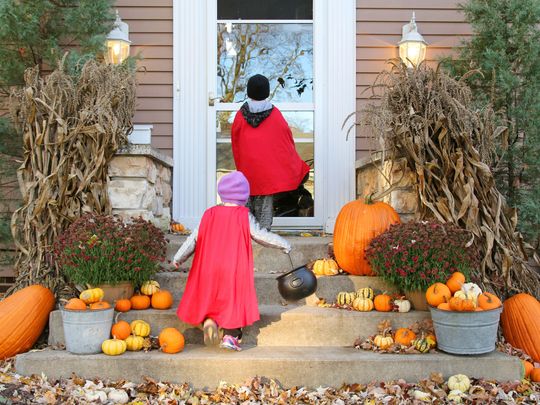
Children in costumes track their neighbors and threaten to destroy unless they are rewarded. This is basically what happens every Halloween in the United States.
Trick or treat is synonymous with Halloween celebrations, and we often don’t stop to think about this traditional strangeness. Of course, most children don’t even realize that the phrase “trick or treat” implies a threat of vandalism, but it is part of the legendary history of Halloween customs.
Although Halloween is often more innocent than it was a century ago, the evil tricks still happen.
About 25 years ago, in Logan, Utah, Tia Astle’s family had just settled down after a night of fun. When her 9-year-old son knocked at the door, a big boy at the door asked Astel. When she and her son returned to the door, they found that all the remaining candy was gone, and she used to shoot expensive cameras for friends who had been to their home that night.
What is the relationship with Punxsutawney Phil?
Eight years later, Astle’s mother living in St. George called to tell her daughter that she had received the stolen camera and the photos in the camera film that were stolen while shooting. Apparently, the accused thief was later arrested, and when his parents passed his bedroom, they found the camera and developed a movie to find clues about the owner.
When the boy’s parents showed the photos to some friends, one of them recognized Astle’s mother. Soon, the camera and photos, including photos of Astle’s three sons, were sent back to Astle, who now lives in Washington, DC.
“I am very happy to get my camera back, but the photos make more sense,” she said.
Superhero costumes and lots of candy are associated with modern Halloween celebrations. However, clothing and food are actually associated with early festivals that have inspired annual celebrations.
As with other Halloween traditions, tricks or treatments originate from ancient European festivals. Most of the Halloween traditions have been adapted from the Roman Ferria and Pomona festivals as well as the Celtic Samhain festival, which in turn inspired Catholic All Souls and Halloween.
According to History.com, the Celtics celebrated Samhain in the current Irish, French and British regions on the evening of October 31, 2000. The villagers believed that the deceased returned to Earth for Samhain, and they wore costumes made of animal skins to drive away unwelcome souls. Eventually, this custom evolved into a “mummy” approach where the celebrity would dress up as demons, ghosts and other terrible creatures in exchange for food and drinks.





























